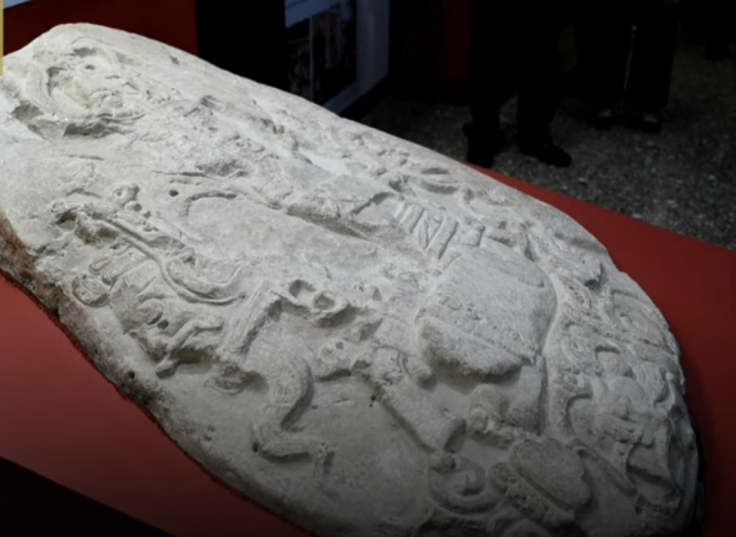
In a small archaeological site in northern Guatemala has drawn the attention of the researchers after the discovery of 1,500-year-old Mayan altar. The historic finding took place in a temple at the La Corona archaeological site, which is basically a forest region and quite close to the borders of Mexico and Belize.
Tomas Barrientos, the co-director of excavations and investigations said the altar carved out of limestone and after weighing they found that it is almost one ton. In addition, he said that the artefact has shown some textures that indicate towards the exact features of La Corona's ruler King Chak Took Ich'aak.
Barrientos explained that the ancient leader could be seen in the altar while "sitting and holding a sceptre from which emerge two patron gods of the city."
The researchers believe that the 1.46-meter by 1.2-meter slab also includes hieroglyphic Mayan inscription, corresponding to May 12, 544. Further excavation process also allowed the archaeologists to determine that King Chak Took Ich'aak of the Maya city of Tikal has governed the nearby city of El Peru-Waka some 20 years later.
As per Barrientos, these pieces of ancient evidence indicated that the Kaanul dynasty had developed a political movement in La Corona, which has been a site for the archaeologists to determine the relationship between the powerful kingdom of Calakmul and historic region.
However, Barrientos said that such political movement, which was based around alliances with small cities surrounding Tikal ahead of the final victory push, allowed Kaanul dynasty or the Serpent Kingdom to defeat their Tikal "arch rivals" in 562 and thereafter rule the Mayan.
Researchers also found evidence of a royal marriage between a princess from the Serpent Kingdom and a King of La Corona. While talking quite dramatically, Barrientos added that "This altar shows us a part of Guatemala's history and in this case, around 1,500 years ago, I would call this the historical Mayan version of Game of Thrones."
He also stated that the altar "fills in the gaps" and "pieces together the puzzle" the political commitments of Mayan culture. Barrientos said, "It's a high quality work of art that shows us they were rulers entering into a period of great power and who were allying themselves with others to compete, in this case, with Tikal," and La Corona was the location, "where the most important historical Mayan political movement began to take shape."
It is quite challenging for the archaeologists to investigate a place, particularly the remote Mayan Biosphere Reserve, as the region is constantly facing several issues related to drug trafficking, activities by illegal ranchers and looters. There were many pre-Columbian monuments, which are now damaged due to the forest fires.
AFP reported that Gladys Palala, the Culture deputy minister said the concerned authorities are trying to counter encroachment by criminal groups surrounding Peten, which is an area ripe with "archaeological remains." She also added, "Wherever you go and excavate, you find (something). It's an eminently archaeological area."
Recently the National Museum of Archaeology and Ethnology in Guatemala City unveils the ancient Mayan altar, which will go on display to museum visitors.









